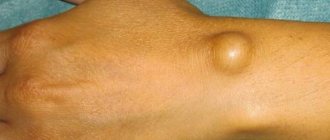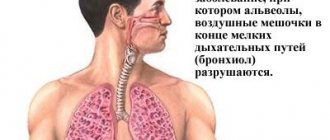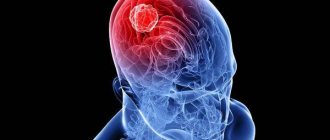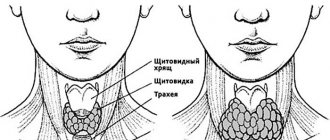It is more logical to use the name cardiomyopathy, that is, in the plural, since even in ICD-10, two sections list a dozen and a half varieties that differ both in characteristics and causes of occurrence.
Note that the pathology has an extremely unfavorable prognosis. There is a high likelihood of complications that can lead to sudden death.
Myodystrophies
Strictly speaking, this type is not considered cardiomyopathy. The essence is the development of muscle weakness, a gradual weakening of contractility, and a decrease in the total mass of active tissues in general. The heart also suffers. Objectively, the pathological process manifests itself as the proliferation of cardiac structures.
What are the reasons for the formation?
The disease is purely genetic in origin. Represented by a group of syndromes: Noonan, Friedreich, Duchenne. Inherited from parents. It shows itself actively from the very first months of life.
The clinical picture worsens gradually as the condition progresses:
- Chest pain, muscle discomfort. Accompanies a person from the very beginning.
- Muscular weakness. It manifests itself in the insufficient development of facial structures, the patient cannot express emotions normally, he has a motionless face, and his speech is slurred for the same reasons. Children with genetic syndromes get back on their feet later. Movements are uncertain, frequent falls are possible.
- Decrease in intelligence. It shows up from the very beginning.
- Dyspnea. At rest due to impaired gas exchange.
- Dangerous arrhythmias. Atrial fibrillation or extrasystole, when there are too many abnormal contractions during the day.
At approximately 10-12 years of age, patients completely lose the ability to walk. The size of the myocardium reaches significant values, changes are diagnosed by echocardiography.
The contractility of the muscle layer decreases, hence hypoxia and tissue ischemia. Possible heart attack. Death occurs as a result of heart failure at a maximum age of 25-30 years. There are exceptions to the rule, but they are few in number and have no clinical significance.
Treatment is not possible because these are genetic pathologies. They are embedded in a person at a fundamental level.
There is a chance of slowing progression with steroid medications. Additionally, physical education is prescribed according to the approved plan. The effect is partial.
What is known about the etiology
According to the approved provisions of the World Health Organization, the disease cardiomyopathy should be considered as any disorder of the functioning of the heart muscle. Obviously, there can be many reasons for the development of this disease. Depending on the etiology, there are two types of cardiomyopathy, which also differ in the degree of prevalence of pathological changes in the human body.
Primary cardiomyopathy
This type is characterized by limited myocardial damage in the absence of signs of other pathologies, and usually appears unexpectedly against the background of apparent human health.
Primary cardiomyopathy may have the following causes:
- Heredity - genetic mutations associated with a congenital defect in one of the proteins that are found in cardiomyocytes and are involved in the process of contraction of the heart muscle.
- Viral infections - the role of a number of viruses, in particular Coxsackie virus, cytomegalovirus, in the pathogenesis of myocardial damage has been established, this is confirmed by the detection of characteristic antibodies in patients. Viruses can affect the DNA chains of cardiomyocytes, disrupting their function. These infections are not always recognized, as they manifest themselves with atypical symptoms; often the only detected problem is disruption of the normal functioning of the heart.
- An autoimmune process - one’s own antibodies begin to attack the cells of one’s body, namely cardiomyocytes. This mechanism can be triggered by various pathological processes, which are extremely difficult to establish and control. In this case, cardiomyopathy usually develops quickly with an unfavorable prognosis for the patient.
- Idiopathic sclerotic changes in the heart muscle - a gradual proliferation of connective tissue fibers occurs in place of functionally active muscle cells without an established cause (as opposed to secondary fibrosis after myocarditis or heart attacks). As a result, the heart muscle loses the ability to fully contract.
This cardiomyopathy is treated symptomatically, since it is not possible to find out the cause of the pathology and eliminate it.
Secondary cardiomyopathy
It develops as a consequence of another pathology in adults and adolescents, and is usually part of a systemic (general) problem in the body. What could be the reasons:
- Infections - viruses, bacteria, parasites, pathogenic fungi can lead to the development of inflammation of the myocardium (myocarditis) with further progression of the disease and the formation of cardiomyopathy.
- Ischemic and atherosclerotic heart disease - leads to disruption of myocardial nutrition due to insufficient oxygen supply, followed by the death of cardiomyocytes and the growth of non-functioning fibrous tissue in their place.
- Endocrine disorders - diabetes, obesity, thyroid dysfunction, adrenal pathology.
- Storage diseases - hemachromatosis (iron deposition in tissues), excess or lack of glycogen.
- Imbalance of electrolytes - with chronic kidney disease, with prolonged vomiting or diarrhea.
- Systemic connective tissue pathology in the form of rheumatoid arthritis, dermatomyositis, scleroderma or lupus.
- Amyloidosis is a hereditary or secondary formation and accumulation in tissues of a pathological protein that impairs the elastic properties and contractility of the heart muscle.
- Neuromuscular diseases - disturbances of the normal innervation of the heart in Duchenne muscular dystrophy, Becker's disease, Friedreich's ataxia.
- Poisoning with poisons, toxins, heavy metals, ethanol.
- Hormonal imbalance - in women during menopause, in children during adolescence.
Autoimmune form
It develops as a result of a long-term or acute, aggressive course of systemic pathologies in which the reaction of the body’s defenses is involved. Lupus erythematosus, psoriasis, rheumatoid arthritis, leukemia as the main diagnoses. Cardiomyopathy is a complication.
The exact reasons for the occurrence of such consequences are not known. It is assumed that there is a connection between the underlying disease and the anatomical defect.
Symptoms of the CMP itself are represented by cardiac manifestations, less often by nervous moments:
- Severe arrhythmia. By type of increase in heart rate at an early stage. The level reaches 130-150 beats, this situation lasts for a relatively short time.
As it progresses, things get worse. The process enters a constant phase. Over time, the person ceases to notice the deviation and lives relatively normally.
- Ascites. Accumulation of fluid inside the abdominal cavity. It appears as a late symptom. Talks about liver dysfunction.
- Edema of the lower extremities. For reasons of the heart. On the other hand, it is possible that the kidneys may be involved in destructive changes.
- Dyspnea. In a state of physical activity in the early stages. As it progresses, the threshold of activity required for symptom development drops until it reaches a minimum. The person is unable to even walk or get out of bed. Profound disability ensues.
- Blueness of the skin. The patient becomes like a wax figure.
- Pale or cyanotic nasolabial triangle.
- Episodic short-term chest pain. There may be a feeling of heaviness without visible
- reasons. Weakness, fatigue.
- Dizziness and headache.
- Fainting. Neurogenic manifestations occur relatively late. A threatening sign. There is a possibility of a stroke.
Treatment involves eliminating the underlying condition. This is very problematic, since autoimmune processes are not completely eradicated. There are good chances only in the early stages of transferring the disease into stable remission.
This is a long process, not always one hundred percent effective. Immunosuppressants and glucocorticoids are used. A change in lifestyle is indicated.
Symptomatic measures include the use of cardioprotectors, diuretics in minimal dosages, and blood pressure lowering agents. Every step is controlled by a group of specialists.
Symptoms of cardiomyopathy
Unfortunately, cardiomyopathy can occur for a long time without any symptoms, and then manifest itself with symptoms common to many cardiac diseases:
- shortness of breath with minor physical effort, walking;
- arrhythmias;
- pain in the heart area;
- constant loss of strength;
- dizziness;
- fainting states.
Often, cardiomyopathy can be suspected only when the disease is already in the stage of decompensation and all the symptoms of heart failure are present:
- shortness of breath even at rest;
- presence of swelling in the legs;
- ascites (accumulation of fluid in the abdominal cavity), enlarged liver, etc.;
- atrial fibrillation and other types of arrhythmias;
- cough that gets worse when lying down;
- attacks of suffocation;
- pulmonary edema.
Toxic form
Represented by a number of pathological processes. The origin is always the same in essence - the effect on the body of toxic substances.
These are drugs, for example, cardiac glycosides, beta blockers, antipsychotics in large dosages. Also salts of heavy metals, mercury vapor, ethyl alcohol (alcohol). In relatively rare cases, smokers suffer.
Patients working in hazardous industrial enterprises are at increased risk. The probability of such an unfavorable scenario is 25%.
The reasons lie in the disruption of myocardial nutrition at the cellular level. The heart does not receive enough oxygen as a result of two factors: narrowing of the coronary arteries, as well as metabolic abnormalities, a decrease in the rate of metabolic processes.
The symptoms are approximately the same. Chest pain, rhythm disturbances such as tachycardia and other subjective issues. However, the pathological process is many times more aggressive, and the likelihood of death is also higher.
Cardiomyopathy is aggravated by the influence of the main etiological factor. An alcoholic will not stop drinking because of a diagnosis, a smoker will find it difficult to give up cigarettes, and so on. However, lifestyle changes along with taking medications are the main condition for effective treatment.
Progression of cardiomyopathy
As cardiomyopathy worsens, patients begin to suffer from arrhythmias (irregular heart rhythms) and heart failure.
As a result of ventricular arrhythmias, patients are at risk of sudden death. Additionally, heart failure can progress and also become life-threatening, requiring a heart transplant.
Metabolic form
Cardiomyopathy developing as a result of metabolic disorders. In particular, weakening of the nutrition of cardiac structures.
The main factors in the development of the problem are diseases of the adrenal glands, thyroid gland, and pituitary system.
Excess hormones are considered the main development factors. T3, T4, TSH, cortisol, adrenaline, dopamine and other neurotransmitters in excessive quantities lead to an acceleration of the heart.
Hence the increase in blood pressure and the increase in the volume of pumped blood. This means expansion of the chambers of the organ, thickening of the walls.
Symptoms include cardiac and neurological components. In addition, respiratory function is impaired. Progresses slowly over years. Until a certain point, there are no manifestations at all. Metabolic cardiomyopathy is an incidental finding.
Treatment is carried out as planned, immediately after identifying the pathological process. The bottom line is to eliminate the underlying endocrine diagnosis.
Replacement therapy and surgical intervention are carried out. Often diseases are caused by tumor changes. Neoplasia is excised, malignant tumors are irradiated.
Symptomatic measures involve relief of pain, arrhythmia, hepatic and renal manifestations in combination. The main goal is to slow down the progression and prevent the development of complications.
Causes of cardiomyopathy
The causes of cardiomyopathy are very different. Sometimes an incorrect lifestyle leads to the appearance of a disease, and sometimes the disease is hereditary and appears due to the tendency of genes to this:
- Viral diseases
- Heredity
- Consequences of heart disease
- Intoxication of the body
- Influence of allergens
- Changes in the functioning of the endocrine system and endocrine regulation
- Problems with the immune system
- Alcohol addiction
Inflammatory type
Relatively rare. It occurs as a consequence of myocarditis, damage to the muscular layer of the heart.
As the process continues, the probability increases. Cardiomyopathy is asymmetrical in nature and develops at the level of individual chambers.
The deviation progresses at different rates, depending on the degree of damage.
Treatment is urgent, in a hospital setting. At an early stage of the process, when there is an acute infectious period, antibiotics are indicated, plus cardioprotectors to protect cells from destruction.
Autoimmune varieties are eliminated by glucocorticoids in a system with immunosuppressants. In case of total destruction of the atria, prosthetics are indicated.
Clinical examination of cardiomyopathy
Your doctor will ask you numerous questions about your symptoms and family history to obtain information to diagnose this disorder.
Often, patients with cardiomyopathy may have close relatives with the disorder or a family history of sudden or premature death. If you have a close relative who was previously well and died suddenly, it may be worth seeing a doctor to investigate the possibility of these disorders.
The doctor will carefully examine the entire cardiovascular system to diagnose these disorders. The nature of the pulse, as well as abnormal and unnecessary heart sounds (tones) are important signs that need to be identified.
Hypertensive form
Presented in two varieties.
- Peripartum cardiomyopathy is a result of pregnancy. The exact origin of the deviation is unknown; it is assumed that we are talking about changes in hormonal levels and changes in the body.
There is a correlation between the number of children and the likelihood of deviation. It is rare; a predisposing factor is a history of cardiovascular disease.
- The second type is associated with insufficient nutrition of the heart. Ischemic cardiomyopathy is a decrease in the quality of tissue trophism, as a result of which a compensatory reaction begins with the growth of the muscle layer. It turns out to be the result of a stable increase in blood pressure.
Symptoms of cardiomyopathy are vague. They overlap with signs of hypertension and are therefore not noticeable without a special examination. The prognosis is unfavorable for advanced hypertension, since a prerequisite for cure is correction of tonometer readings.
Therapy is carried out using beta blockers, ACE inhibitors, centrally acting drugs, calcium antagonists. The doctor selects specific names; incorrect combinations are critically dangerous for the heart and kidneys.
Diagnosis of cardiomyopathy
Diagnosis of CMP should be trusted only to an experienced specialist, since the clinical picture for various pathologies has similar signs.
First, the doctor collects anamnesis and examines the patient (pays attention to skin color, clarifies the presence of edema, measures heart rate and blood pressure, listens to the heart and lungs with a stethoscope).
Next, laboratory and instrumental studies are prescribed:
- blood tests (clinical, biochemical, hormonal status, lipid profile, etc.);
- electrocardiography (ECG);
- Holter monitoring ECG;
- echocardiography (ultrasound of the heart);
- radiography;
- coronary angiography;
- MRI, CT scan of the heart.
Valve shape
It occurs as a result of an uneven load on the cardiac structures: mitral, aortic, tricuspid stenosis and other defects. Causes may be congenital or acquired.
Symptoms are caused by regurgitation. Improper hemodynamics in the heart itself.
The basis is made up of cardiac manifestations, such as shortness of breath, arrhythmia, pain, and general discomfort. Recovery is strictly surgical. The operation involves valve replacement.
All described diseases have a single ICD code - I42, followed by a postfix through a dot, it indicates the etiology of the process.
Regardless of the type and origin, there is always a group of objective features that are visible on echocardiography, ECG and MRI:
- Enlargement of the heart.
- Increased pressure in the aorta and pulmonary artery.
- Decrease in the ability of the myocardium to contract.
- Dilatation, that is, expansion of the chambers of a muscular organ.
- Hypertrophy of the walls.
In approximately 70% of cases there are no symptoms at all, but anatomical changes are already present. Therefore, it is necessary to contact a cardiologist in a timely manner. At least for the sake of undergoing a preventive assessment of the patient’s condition.
Other classifications are used much less frequently. It is possible to distinguish hypertrophic, dilated and restrictive forms.
The first is characterized by thickening of the ventricular myocardium, the septum and the release of blood into the aorta are also affected. The second is the expansion of the chambers, the third is the growth of the walls themselves along the entire length of the heart.
Classifications of cardiomyopathies
Classification of cardiomyopathies by origin
Based on their origin, they distinguish between primary (myocardial diseases of unknown origin) and secondary cardiomyopathy (the cause of myocardial damage is known or is associated with diseases of other organs).
Causes of primary cardiomyopathy:
- Genetic disorders;
- viral infections (Coxsackie, etc.);
- replacement of the heart muscle with connective or fatty tissue.
Causes of secondary cardiomyopathy:
- endocrine disorders (thyrotoxicosis, diabetes mellitus);
- intoxication (toxic, alcoholic, etc.);
- stress (Takotsubo cardiomyopathy).
Classification of cardiomyopathy according to clinical signs (main forms):
Dilated cardiomyopathy is the most severe and common. With this disease, cardiomegaly occurs - a significant increase in myocardial cavities. As a result, the heart loses its ability to fully pump blood. Dilated cardiomyopathy inevitably leads to the development of heart failure.
Peripartum (postpartum) cardiomyopathy is one of the types of dilated cardiomyopathy. Paradoxically, the development of heart failure in a woman and its characteristic symptoms is practically the main sign of the peripartum form. Other common options include alcohol.
Hypertrophic cardiomyopathy (HCM) is one of the main causes of sudden death in young, physically active people (athletes, military personnel). This cardiomyopathy is associated with thickening of the myocardium (cardiac muscle hypertrophy). The increase in wall thickness outpaces the development of blood vessels and, as a result, the blood supply to the heart muscle is disrupted, and the filling of the ventricles with blood also suffers.
HCM is more common in men.
Obstructive cardiomyopathy (subaortic subvalvular stenosis) is a type of hypertrophic cardiomyopathy in which blood flow into the aorta from the left ventricle is limited by a locally thickened interventricular septum.
Restrictive cardiomyopathy is a rare pathology in which the elastic properties of the heart walls deteriorate. The myocardium loses its ability to stretch and relax, which impairs its ability to fill with blood. The result is stagnation of blood in the veins and a lack of it in the arteries. The probable cause of this is abnormal proliferation of connective tissue.
Arrhythmogenic right ventricular cardiomyopathy (Fontan disease) - accompanied by life-threatening arrhythmias.
Arrhythmogenic CMP can cause ventricular arrhythmia in children and young adults with apparently normal hearts, as well as in older patients. The outcome of this disease is often sudden death, especially at a young age.
Takotsubo cardiomyopathy (broken heart syndrome) is a very rare disease in which a sudden, transient decrease in myocardial contractility develops. The shape of the left ventricle, due to pathological expansion, is externally similar to takotsubo - an octopus trap in Japan (it was in this country that this syndrome was discovered and described).
Takotsubo CMP is a cause of acute heart failure. It is more often detected in postmenopausal women and develops against the background of severe psycho-emotional shock. On the ECG it can masquerade as myocardial infarction.
Diagnostics
It is carried out under the supervision of a cardiologist, and third-party specialists are involved as necessary. It is difficult to define the disease. List of events:
- Oral survey. It is impossible to identify the process based on the nature of the complaints.
- Anamnesis collection. Age is taken into account. Thus, the dilated form is more common in young men under 35 years old, hypertrophic in people around 40, restrictive after 45, and is also observed in women.
Also, lifestyle, diet, past illnesses, addictions, family history and other factors.
- Measurement of blood pressure and heart rate. Both indicators are deviated from the norm. The first is in the direction of increase at first, then in a falling manner, which indicates insufficiency. Heart rate increases, tachycardia occurs.
- Auscultation. Listening to heart sounds. Sinus murmur occurs against the background of valve defects. Muted tones.
- Daily monitoring. In controversial cases. Records heart rate and blood pressure for 24 hours. Gives a dynamic picture.
- Electrocardiography. Specific manifestations are represented by arrhythmias such as tachycardia, fibrillation, extrasystole
- Echocardiography. Profile technique. Aimed at assessing the anatomical state of a muscular organ, measuring pressure in the aorta and pulmonary artery.
- MRI if necessary to clarify the extent of disorders.
- General blood test, biochemical, hormones. Including liver tests.
- Urine examination. Necessary for assessing the functioning of the excretory system.
Identifying the cause of cardiomyopathy is difficult. In 15-20% of cases, an idiopathic, that is, clinically unexplained form is diagnosed.
This complicates therapy; it is necessary to limit oneself to symptomatic measures. The examination is repeated every 6-12 months. In threatening forms, more often, since there is a risk of death.
Restrictive cardiomyopathy
This type of disease has a primary or secondary nature of heart damage.
This rare disease of the myocardium (and, in rare cases, the endocardium) manifests itself in the reduction of the chambers of the heart, without thickening the walls and impairing the diastolic function of the ventricles. The size of the heart does not increase, or only minor changes occur. One or both atria are enlarged. The appearance of fluid is often observed in the pericardial cavity. In the systemic circulation, blood stagnation occurs in the veins; even with minimal physical activity, shortness of breath and weakness, swelling appear, tachycardia and paradoxical pulse appear. Cardiohemodynamics are disrupted (the elastic stiffness of the ventricles increases sharply), as a result of which the intraventricular pressure in the veins and pulmonary artery increases sharply.
Treatment
Requires elimination of the etiological factor: endocrine disease, defect or other. Manifestations are stopped in the second place. The list of methods is huge, since there are a lot of options for the formation of a pathological process.
Surgical intervention is prescribed when anatomical defects are detected. The essence is the expansion of coronary vessels, prosthetic valves, sections of arteries. Strictly according to indications.
The drugs are used to treat the underlying condition.
Symptomatic remedies:
- Nitroglycerin for pain relief.
- Cardioprotectors. Protect myocytes from oxidation and destruction. They also improve metabolism at the local level. Mildronate.
- Antiarrhythmic. Small doses when detecting abnormalities in the heart. Amiodarone as the main one.
- Glycosides. Improves myocardial contractility. Digoxin. Prescribed with great caution. In the later stages of cardiomyopathies, they are not used, the risks are too great.
- Beta blockers. To relieve tachycardia, lower blood pressure and normalize vascular tone. Carvedilol or Anaprilin.
- Antiplatelet agents. Normalize blood fluidity. Prevents the formation of blood clots. Aspiran-Cardio, Heparin.
- Means for lowering blood pressure. Calcium antagonists, ACE inhibitors and centrally acting medications.
As needed, diuretics. They remove excess fluid and reduce the load on the heart. Quitting smoking and drinking alcohol is mandatory.
The diet is moderate, low in fat. Treatment table No. 10 is shown.
Physical activity in the form of walking, swimming or exercise therapy, no gyms or overload. Cardiac arrest and sudden death are possible.
Treatment of cardiomyopathy is medicinal, using a group of drugs. Surgery is a last resort. Advanced cases require transplantation. This is the only chance.
Clinic
Some people who have cardiomyopathy have no signs or symptoms. In others, the clinical picture in the early stages of the disease is mild.
As cardiomyopathy progresses, the patient's general condition worsens and heart function weakens. This usually results in signs and symptoms of heart failure, which include:
- Shortness of breath or difficulty breathing, especially with exercise
- Fatigue or severe weakness
- Swelling in the ankles, legs, abdomen and veins in the neck
Other symptoms of cardiomyopathy may include dizziness; delusional; fainting during physical activity; arrhythmia (irregular heartbeats); chest pain, especially after exercise or heavy meals. Heart murmurs are also often detected - these are additional or unusual sounds that are heard during the heartbeat.
Forecast
Depends on the underlying diagnosis, rate of progression, risk factors. On average, 5-10% of patients die within 5 years. As the defect develops, the percentage increases.
Age over 50+, smoking, bad habits in general, taking heavy medications, such as cytostatics, antipsychotics, tranquilizers, unfavorable family history, and the presence of concomitant diseases significantly worsens the prognosis.
Treatment, especially if carried out in the early stages, contributes to a good outcome, although no one can give guarantees.
You need to take a closer look and assess the patient’s health status. Each case is individual, but the chances for a long and high-quality life are more than real.
What is metabolic cardiomyopathy
Cardiomyopathy in metabolic disorders is a non-inflammatory myocardial lesion that can develop as a result of impaired fatty acid metabolism, leading to dystrophy and insufficient contractility of the heart.
All changes occur inside the cells of the heart, but they cannot be determined externally, since neither the number of cells nor their appearance changes (size, shape remain the same).
Inside the cell there are both healthy and damaged mitochondria.
- All information on the site is for informational purposes only and is NOT a guide to action!
- can give you an ACCURATE DIAGNOSIS !
- We kindly ask you NOT to self-medicate, but to make an appointment with a specialist !
- Health to you and your loved ones!
Complications
The following consequences are observed:
- Cardiogenic shock. Almost 100% lethal.
- Heart failure. No possibility of resuscitation. Because the organ has been changed.
- Fainting and injuries incompatible with life.
- Stroke. Critical malnutrition of the nerve cells of the brain.
- Heart attack. Necrosis of active muscle tissue with subsequent scarring. Even if life is preserved, coronary disease and CLS occur.
Death is a logical continuation of these complications.
Cardiomyopathy of the heart is the growth of the myocardium, thickening of its walls, expansion of the chambers. Requires urgent treatment immediately after detection of a deviation. The prognosis depends on the start of therapy.
What happens to the heart?
In some cases, cardiac and congestive myopathies combine their symptoms. They begin to appear as the disease develops, but are not obvious in the initial stage of the disease. The following morphological changes in the myocardium are distinguished:
- Parenchymal dystrophy. It can be horny, granular, hyaline-droplet, hydropic. With this form, proteins coagulate and stick together; for this reason, fluid accumulates in the cytoplasm of the muscle cells of the heart.
- Dystrophy of mixed type. Over time, the myocardium deforms due to stretching of cell tissues, the septa become thin, and the muscle weakens.
- Mesenchymatous. With this type, the structure of cells changes. Cell self-regulation is disrupted, fluid exchange is disrupted, problems with endocrine organs appear, and microcirculation is disrupted.
Metabolic degradation in cardiomyopathy leads to various types of dystrophy: protein, carbohydrate, mineral, fat.
Myocardial dystrophy is classified for reasons:
- dishormonal;
- dismetabolic;
- mixed;
- unknown etiology.
The development of metabolic cardiomyopathy goes through the following stages:
- Neurofunctional stage.
- Structural-exchange stage.
- Metabolic type of cardiovascular failure.
The first stage is manifestations of neurocirculatory dystonia. Violations manifest themselves as vascular, vegetative. The second stage is divided into two periods. The compensation period is characterized by circulatory disorders during exercise; at rest, blood circulation is normal.
At the third stage, when there is decompensation, the stage of circulatory disorders begins, which is determined by changes in metabolism in the heart muscle.
Types of complexity of myocardial dystrophy:
- spicy;
- chronic dystrophy;
- myodystrophic cardiosclerosis.
Based on the location of dystrophic manifestations in the heart muscle, diffuse dystrophy and focal dystrophy are distinguished.
Symptoms of cardiomyopathy resemble other heart diseases, manifested by the following symptoms:
- decreased performance, fatigue, lethargy and apathy;
- the appearance of chest pain;
- the heart works irregularly, intermittently.
When examined by a cardiologist, the following symptoms of cardiomyopathy are revealed:
- the heart is enlarged;
- muffled heart sounds appear when listening;
- heart murmurs are detected during systole;
- extrasystole is heard as a manifestation of arrhythmia;
- cardiac failure is diagnosed.
When examined, characteristic waves are recorded on the ECG, which confirm the diagnosis of cardiomyopathy.
Dysmetabolic cardiopathy - what is it?
Dysmetabolic (endocrine) cardiomyopathy is a heart disease caused by a metabolic disorder. Dystrophic changes occur in the myocardium (the muscle responsible for normal contractions); the cavities of the heart stretch, the walls thicken.
Dysmetabolic cardiomyopathy - ICD 10 code - I43.1 Cardiomyopathy in metabolic disorders.
- menopause;
- changes in the functions of the endocrine glands (diabetes mellitus, etc.);
- complications during treatment with hormonal drugs.
- malnutrition, vitamin deficiency;
- physical overload;
- anemia;
- obesity;
- disorders of the gastrointestinal tract;
- complications after infectious diseases;
- congenital, hereditary characteristics of the body;
- bad habits and other factors (smoking, alcoholism, drug use, poor environment).
At the initial stage, the disease usually occurs without symptoms. Rarely do you experience discomfort in the chest area after physical activity. At this stage, the disease can be detected accidentally using electrocardiographic diagnostics.
- shortness of breath, rapid heartbeat;
- general weakness;
- attacks of suffocation;
- fainting;
- squeezing pain behind the sternum;
- insomnia;
- swelling of the legs;
- slow heart rate, drop in blood pressure.
Endocrine cardiomyopathy can appear in patients at any age. Initially, the disease may not manifest itself at all. Over time, minor symptoms appear that a person does not pay attention to. As the degree of cardiomyopathy worsens, patients begin to complain of:
- severe swelling of the legs;
- constant dizziness;
- frequent weakness throughout the body;
- pain in the sternum;
- shortness of breath;
- frequent fainting;
- the appearance of a sleep disorder;
- the occurrence of asthma attacks;
- significant enlargement of the abdomen.
Myocardial dystrophy refers to pathologies that do not have a specific, pronounced clinical picture. For a long time, the disease may not manifest itself at all, being asymptomatic. Signs of the disease directly depend on its type and the cause that provoked the disorder.
In the cardiac form of pathology, the following symptoms are most often observed:
- profuse sweating;
- general weakness;
- low ability to work;
- fast fatiguability;
- increased heart rate;
- dizziness;
- aching or pinching pain in the heart area;
- feeling of heat;
- cold fingers.
In the stagnant form, the following manifestations are observed:
- severe shortness of breath, especially during physical exertion or nervous shock;
- attacks of cough not associated with colds;
- swelling of the lower extremities and face;
- frequent attacks of angina pectoris;
- the appearance of fluid in the pericardial sac;
- accumulation of fluid in the pleural cavity;
- liver enlargement.
The last three manifestations can only be detected during diagnostic procedures.
When heart rhythm disturbances occur:
- tachycardia (increased heart rate more than 90 beats per minute);
- arrhythmia (violation of the frequency, rhythm and sequence of excitation and contraction of the heart muscle);
- attacks of atrial flutter.
Also, symptoms of metabolic cardiomyopathy can manifest themselves in a combined form. In this case, cardiological manifestations in combination with heart rhythm disturbances are simultaneously observed.
If the above symptoms occur, you should immediately contact a specialist. The danger of metabolic cardiomyopathy is that its development occurs gradually, and symptoms appear only when metabolic failures cause disturbances in the structure of the heart muscle. The sooner this disease can be recognized, the more favorable the treatment outcome will be.
Since the disease is a secondary pathology, the development of which is provoked by other abnormalities in the human body, the cause that contributes to the development of myocardial dystrophy is first identified. It is with its elimination that the healing process begins.
The course of treatment is aimed not only at relieving the underlying cause, but also at reducing the consequences of cardiac muscle dystrophy and restoring swollen intracellular particles. First, metabolic therapy is prescribed, which involves taking drugs that help stimulate the transport of oxygen through the internal organs, as well as its rapid utilization.
Also, if necessary, the specialist prescribes a course of vitamins that slow down the processes of oxidative phosphorylation. Next, the cardiologist prescribes drugs of various groups that can stop myocardial dystrophy. This:
- amino acids (most often prescribed are Methionine, Serine, Tryptophan);
- anabolic steroids - in combination with amino acids, these drugs help improve the metabolic process in the heart muscle;
- components of plant origin: Schisandra chinensis in the form of fruits, ginseng root, eleutherococcus and other agents that have antioxidant functions, regulate metabolism in cells, increase cell resistance to conditions of oxygen deficiency;
- Piracetam, which increases the efficiency of the nervous system;
- Trimetazidine, which increases myocardial resistance to hypoxia by increasing energy metabolism;
- Nicotinamyl, which is able to accelerate the process of anaerobic oxidation and glycogen metabolism, which also enhances cell resistance to hypoxia;
- potassium chloride, which is prescribed in case of relapse of the degenerative process that occurred after a therapeutic course;
- potassium orotate, which has a general strengthening effect, accelerating the processing of proteins and nucleic acids.
When treating metabolic cardiomyopathy, it is important to properly organize the work and rest schedule, leaving enough time for proper sleep.
If the treatment process is started on time, then there is a chance of recovery. After completing the full course of treatment, the patient's condition stabilizes. In addition, the process of restoration of damaged mitochondria is activated, and the heart muscle will begin full activity again.
Dysmetabolic cardiomyopathy - ICD 10 code - I43.1 Cardiomyopathy in metabolic disorders.
ECG for dismetabolic cardiomyopathy
Dysmetabolic cardiomyopathy is a change in the structure of the heart muscle that leads to disruption of its function. It develops with pathology of the endocrine system, drug addiction, alcoholism, and obesity. Treatment is predominantly conservative.
In case of severe heart failure, surgical intervention is resorted to (valve replacement, heart transplant). Prevention consists of maintaining a healthy lifestyle and timely treatment of diseases of the cardiovascular system.
Dysmetabolic cardiomyopathy can develop in people of any age, but is more common after 45-55 years. The causes of the disease are:
- diseases of the endocrine system (diabetes mellitus, hypothyroidism);
- menopause;
- taking hormonal and antitumor drugs;
- long-term use of alcohol and drugs;
- disturbances in the functioning of the stomach and intestines;
- idiopathic causes (that is, when the cause of the disease cannot be determined).
Cardiomyopathy most often develops in the following cases:
- In people who are obese.
- With a monotonous diet low in vitamins and calcium.
- When exposed to occupational hazards.
- For people living in regions with poor background radiation, the presence of toxins in water, soil, and air.
- With genetic predisposition.
Dysmetabolic cardiomyopathy can lead to the development of the following adverse consequences:
- Heart failure is an insufficient flow of blood from the left ventricle into the systemic circulation.
- Valve insufficiency is poor closure of the valves during heart contraction, leading to reverse blood flow.
- Arrhythmias are a change in the regularity of contractions as a result of the replacement of nerve and muscle fibers with connective tissue.
- Pulmonary embolism. stroke, infarction of internal organs. It develops when a blood clot escapes from the cavities of the heart into the systemic circulation.
- Death.
Since damage to the heart muscle occurs gradually, in the initial stages the state of health does not change. As the disease progresses, the following complaints may appear:
- swelling of the lower extremities;
- headache and dizziness;
- discomfort in the left half of the chest;
- lack of air when walking, at night;
- sleep disturbance ;
- interruptions in heart function;
- pain in the right hypochondrium, abdominal enlargement;
- loss of consciousness;
- weakness, increased fatigue, drowsiness.
Diagnostics
It is impossible to identify dysmetabolic cardiomyopathy by clinical manifestations alone. To establish a diagnosis, additional examinations are carried out:
- blood test - determination of hemoglobin, total cholesterol, low and high density lipoproteins, prothrombin index, fibrinogen, glucose, ionogram, liver tests, urea, creatinine;
- if cardiac ischemia is suspected, the level of troponins is determined;
- glucose tolerance test;
- general urine analysis:
- electrocardiography;
- Holter monitoring;
- plain chest x-ray;
- ultrasound examination of the cavities of the heart, valves, blood vessels;
- coronary angiography;
- genetic research if a hereditary nature of the disease is suspected;
- CT, SCT, MRI.
Treatment methods
It is not possible to completely cure dysmetabolic cardiomyopathy. But with the help of therapeutic methods that are developed quite well, it is possible to maintain normal heart function for several decades. This is achieved by using the following medications:
- anticoagulants, antiplatelet agents;
- beta blockers;
- antiarrhythmic drugs;
- hypolipidemic;
- antihypertensive;
- magnesium and potassium;
- B vitamins;
- cardiac glycosides;
- sedatives;
- diuretics.
If there are contraindications to the use of the above medications, calcium antagonists (Verapamil, Diltiazem) are used. If signs of the disease are not expressed, only the underlying disease is treated.
Causes
Toxic cardiomyopathy can be found in any person, regardless of gender and age. The causes that cause this disease are divided into primary and secondary by doctors.
Among the primary ones, it is worth noting the following types of cardiomyopathy:
- congenital;
- acquired;
- mixed.
The first type is often a consequence of an unhealthy lifestyle or frequent stressful situations during a woman’s pregnancy. In such cases, the child is born with disturbances in the formation of myocardial muscle tissue. Also, the occurrence of congenital cardiomyopathy can be the result of diseases suffered by a pregnant woman, which are characterized by inflammatory processes in the body. This leads to the child’s heart becoming vulnerable to all kinds of infections and toxins.
Secondary causes of the development of toxic cardiomyopathy are:
- disturbances in the functioning of the thyroid gland, adrenal glands, pituitary gland;
- irregular heartbeat, palpitations;
- diseases caused by infections;
- insufficient intake of B vitamins;
- scleroderma;
- systemic lupus erythematosus;
- polyarteritis nodosa;
- heavy metal poisoning;
- intoxication with medications used in the treatment of cancer;
- toxic effects of drugs and alcoholic beverages.
Treatment of secondary cardiomyopathy
Within the framework of therapy, pathologies are not identified in a specific direction, since its causes are varied. The main task is to increase cardiac output, normalize metabolic processes in the myocardium and the entire body, and prevent the progression of the disease. To do this, it is necessary to eliminate the root cause of the disease or smooth out its manifestation as much as possible.
Conservative treatment
Drug therapy involves the use of the following drugs:
- β-blockers;
- anticoagulants;
- antiarrhythmic drugs;
- cardiac glycosides;
- B vitamins.
The use of such medications will eliminate arrhythmia, normalize blood flow and strengthen the myocardium.
3660236602
During treatment, complete abstinence from alcohol is necessary, regardless of the form of secondary cardiomyopathy. You should also give up other bad habits - smoking, drug use.
It is important to adhere to proper nutrition. The diet should contain sufficient amounts of vitamins, microelements and nutrients.
To improve myocardial function, balneotherapy is used. This technique is quite extensive and involves therapeutic baths, showers, thalassotherapy (use of sea water, Dead Sea salts).
Limitation of physical activity is necessary. In some cases, they should be abandoned and bed rest should be observed.
Surgical intervention
In some cases, conservative therapy does not bring the desired effect. If the myocardium is not able to pump blood in the required volumes, then they resort to installing a pacemaker or cardioverter-defibrillator.
If secondary cardiomyopathy is severe, heart transplantation may be required.
A modern technique is the use of stem cells. This approach does not require surgical intervention, but allows you to effectively influence the myocardium and heart muscle.
Prognosis and complications
Toxic cardiomyopathy can lead to the following complications:
- heart failure, in which a sharp decrease in blood flow from the left ventricle is possible;
- dysfunction of the valve apparatus;
- swelling, leading to fluid accumulation in the lower extremities, in the abdomen and lungs;
- heart rhythm disturbance;
- embolization processes (the formation of blood clots interferes with normal blood flow and thereby provokes heart attacks, organ damage and stroke);
- sudden cardiac arrest (in this case we talk about toxic cardiomyopathy with the development of acute heart failure).
The prognosis of the disease depends on many factors, including compliance with all recommendations prescribed by the doctor. The encouraging news is that many patients diagnosed with cardiomyopathy live to a ripe old age. This is possible with timely contact with a cardiologist and undergoing effective therapy.
Why does cardiomyopathy occur in children, its detection and treatment
Damage to the heart muscle, for which it is not always possible to determine the cause, accompanied by circulatory failure, is called cardiomyopathy. In children, it can be primary with mitochondrial dysfunction and secondary due to diseases of the heart and internal organs. To identify it, a comprehensive diagnosis is needed. Treatment is aimed at improving myocardial contractile function, restoring rhythm, and preventing thromboembolism.
Read in this article
Development mechanism
The changes that occur with this pathology are cellular in nature and cannot be seen with the naked eye. Changes in cellular structures occur inside the cardiomyocyte, most often affecting mitochondria and the endoplasmic reticulum. Both damaged and completely normal structures can be present in the same heart cell at the same time.
It is noteworthy that if the factor that caused the disease is eliminated, the myocardial cells will recover on their own.
However, with prolonged adverse effects, this process becomes irreversible, the functioning tissue is replaced by connective tissue, and cardiac fibrosis develops. Since during myocardial fibrosis part of the myocardium stops contracting, other cardiomyocytes that are not damaged take on double work, resulting in myocardial hypertrophy.
Treatment of toxic cardiomyopathy
Treatment of any heart disease is a long and complex process. Since the heart plays a major role in our body, its diseases should be taken seriously.
- It is necessary to eliminate the factor that is harmful to health (stop taking toxic substances).
- The initial stages of cardiomyopathy are treated with medication. First of all, doctors recommend taking drugs from the B-blocker group (atenolol, bisoprolol).
- It is important to take anticoagulants to prevent thromboembolism.
- If it is not possible to achieve positive results with B-blockers, doctors say that it is worth switching to more serious drugs, for example, Verapamil. It is a calcium channel blocker, which in turn reduces the contractile activity of the myocardium, removes stress and helps to increase its functional activity.
- In severe cases, surgical intervention is indicated when there is no effect of drug therapy. The patient may have a pacemaker implanted.
Drugs of the B-blocker group
Dysmetabolic cardiomyopathy: causes, symptoms, treatment, prognosis
The main reason for the development of this disease is metabolic disorders. But there are also risk factors that can also provoke the occurrence and further progression of the pathology. These include the following:
- hypovitaminosis (lack of certain vitamins in the body);
- various kinds of infectious diseases;
- liver and kidney diseases (liver cirrhosis, chronic pyelonephritis);
- intoxication of the body with alcoholic beverages and their breakdown products;
- systematic hypothermia of the body;
- frequent stressful situations, nervousness;
- physical stress;
- diabetes;
- anemia;
- congenital anomalies of the development of individual organs or systems;
- regular exposure of the body to physical factors (noise, radiation, vibration);
- poisoning of the body with medications, which often occurs with an overdose;
- being overweight (morbid obesity);
- lack of protein and iron in the body;
- thyrotoxicosis.
According to medical definitions, this is a phenomenon that represents pathological disorders of the heart muscle. The disease is classified as a secondary type of cardiopathy that occurs against the background of the development of other chronic diseases. At an advanced stage, it can lead to endotoxemia, which contributes to the destruction of the muscle tissue of the heart.
Cardiac disease in violation of metabolic processes has a code according to ICD 10 - I43.1. The main reason for the development of pathology is hormonal changes:
- Physiological changes in the body that come with age.
- Consequences of taking hormonal drugs.
- Disturbances in the processes of releasing chemicals from the body.
Secondary causes of dysmetabolic cardiomyopathy include the following factors:
- poor nutrition, lack of vitamins;
- excessive physical activity;
- anemia;
- excess weight;
- digestive system disorders;
- congenital or hereditary pathologies of the cardiovascular system;
- taking drugs, drinking alcohol, smoking;
- unfavorable environmental conditions with toxic effects.
Symptoms
At the initial stages of this pathological phenomenon, no signs are observed. Often the disease can be detected randomly during examination of the vascular system using electrocardiography (ECG). After some time, the disease begins to progress, manifesting itself fully:
- attacks of suffocation;
- dizziness, loss of consciousness;
- feeling of discomfort in the thoracic region;
- sleep disturbance;
- lethargy;
- increased rhythm;
- heaviness.
Typically, all of the above symptoms begin to bother the patient during physical activities, and later may appear regardless of the patient’s condition. In addition to the symptoms that appear, swelling, bloating due to ascites, and pain in the liver area may occur. When blood flow is disrupted, shortness of breath occurs, cardiac function slows down, resulting in arrhythmia.
The final diagnosis is made after a comprehensive examination. First, the doctor must interview the patient for the presence of cardiac diseases, as well as his relatives suffering from heart failure. Then the patient is examined visually by listening to the heart rhythm. If any interruptions are noticed in its work, this is the first sign of the possible presence of pathology.
To accurately identify the disease, the following tests are prescribed:
- An electrocardiogram that determines heart rhythm disorders, as well as their effect on the nervous system.
- Laboratory examination of urine and blood. Thus, the composition of the fluid will indicate indicators of kidney function, liver function and electrolyte content.
- X-rays show various changes in the shape of the heart muscle.
- Using ultrasound, myocardial dystrophy can be detected.
- MRI is an excellent method for identifying the structure of the heart muscle. It is usually used before surgery, when other diagnostic methods do not provide specific indicators.
Considering that this disease has exclusively general symptoms, it is almost impossible to independently detect the disease. Moreover, when establishing a final diagnosis, the presence of several doctors is necessary - an arrhythmologist, an endocrinologist, a therapist, a geneticist and, accordingly, a cardiologist.
The pathology is classified as myocardial dystrophy. It significantly affects the heart and its most important functions - contractility, conductivity, excitability, automatism. The pathology is most strongly reflected in areas of the heart that have a large number of vessels.
All these changes lead to expansion of the heart and stretching of its cavities. The force of contraction decreases, so the heart tries to compensate by thickening the wall. Against the background of such disorders, lipid deposition is observed in the endocardium.
Dysmetabolic cardiomyopathy is classified as a secondary pathology. Its etiology is based on pathological disturbances of homeostasis. They cause endotoxemia, which triggers heart destruction.
Endocrine cardiomyopathy negatively affects the condition of not only the heart, but also other internal organs. The liver and kidneys are affected.
Causes
Dysmetabolic cardiomyopathy can occur due to the following factors:
- obesity;
- alcoholism or drug addiction (endogenous factors);
- endocrine disorders;
- vitamin deficiency;
- pathologies of the gastrointestinal tract.
Young people who play sports professionally are at risk.
Depending on the causes, dysmetabolic cardiomyopathy can be idiopathic or hereditary. In the first case, the exact reason cannot be found out. Pathology of the hereditary form is more difficult to treat.
People at risk need to be regularly examined by a cardiologist and lead a healthy lifestyle. If you follow preventive measures, you can avoid the disease or detect changes occurring at an early stage.
The initial stage of the disease is often asymptomatic. In this case, signs of pathology can only be detected through instrumental diagnostics (electrocardiography).
With a significant deterioration in the condition of the heart muscle, the disease manifests itself with the following symptoms:
- shortness of breath;
- suffocation;
- heaviness in the legs, swelling;
- lethargy;
- weakness;
- sleep disorders;
- repeated fainting;
- increased heart rate;
- chest pain of a compressive nature.
Symptoms of dysmetabolic cardiomyopathy at the initial stage in most cases appear only after physical activity. As the disease progresses, they occur even at rest. The manifestations of pathology are strongest when the patient is in a supine position.
In advanced cases, hepatomegaly (enlarged liver) is observed. This condition is accompanied by pain and a feeling of heaviness in the right hypochondrium. There may be an increase in abdominal volume associated with fluid accumulation (ascites). Due to stagnation of blood circulation and disturbances in the functioning of the heart, shortness of breath increases. There is a rhythm disturbance.
Diagnostics
Diagnosis of dysmetabolic cardiomyopathy begins with a standard examination and medical history. The specialist must check the presence of cardiovascular diseases in the family. When listening to heart sounds, murmurs are detected - the first sign of disturbances.
Further diagnosis is carried out through clinical and instrumental studies:
- Blood test for biochemistry. The assessment of the lipid spectrum, blood electrolyte composition, and serum glucose is especially important. Using this analysis, it is possible to identify markers of myocardial necrosis.
- Analysis of urine. This study allows you to get a general picture and evaluate the functional indicators of various organs. Of particular interest are the liver and kidneys.
- Electrocardiography. With dismetabolic cardiomyopathy, the cardiogram shows signs of disturbances in the rhythms of the heart muscle. The study also makes it possible to identify the connection of this process with the nervous system and the impact on it.
- Ultrasound scanning. This diagnostic measure is the main one for identifying pathology of endocrine origin.
- Magnetic resonance imaging. This scan is usually used when surgery is necessary. Tomography visualizes the structure of the myocardium with high accuracy, which allows for an effective assessment of its characteristics and pathological changes.
- A chest x-ray can reveal organ overload. This is evidenced by enlarged parts of the heart on the left side. In some cases, x-rays are not informative.
The diagnosis can be confirmed only after a comprehensive examination. This approach is important for making an accurate diagnosis and differentiating the disease from other pathologies with similar clinical manifestations.
Dysmetabolic cardiomyopathy: causes, symptoms, treatment, prognosis
The outcome of the disease can be favorable only if the cause that caused the development of metabolic cardiomyopathy was identified in time. Medications can prolong a patient’s life and help achieve full recovery, since the myocardium has the ability to adapt.
If complications develop, for example, with chronic heart failure or serious damage to the heart muscle, the patient will live no more than a year without a heart transplant.
With timely initiation of treatment, the prognosis is favorable.
In severe forms of dismetabolic cardiomyopathy, the condition of the left ventricle is determined. If its muscle layer is significantly increased, the organ is greatly hypertrophied, the prognosis is 70% unfavorable: the development of heart failure and ventricular fibrillation is likely.
Signs
Symptoms of secondary cardiomyopathy are caused by impaired myocardial contractility. The intensity of symptoms depends on the degree of damage to myocardial tissue. Signs of the disease, as a rule, are gradually increasing in nature. Characteristic signs of a condition such as secondary cardiomyopathy include:
- heart pain;
- dyspnea;
- strong heartbeat;
- general weakness;
- increased sweating;
- fast fatiguability
- cold extremities;
- poor sleep;
- swelling of the legs;
- dry mouth;
- sweating;
- tachycardia;
- dizziness;
- sense of anxiety.
Manifestations of secondary cardiomyopathy are largely nonspecific and cannot indicate this particular life-threatening disease. Only complete diagnosis and targeted treatment can prevent complications and death of the patient.
Mechanism of the pathological process
The resulting myocardial dystrophy can lead to myocardial fibrosis. In turn, this can cause the death of areas of the heart muscle, which will be restored by healthy tissue, which causes hypertrophy.
It is extremely important to promptly begin treatment, which will allow cells to regenerate and eliminate the problem.
There is a wide range of causes that can influence the development of metabolic cardiomyopathy. This list includes:
- alcohol intoxication;
- disturbance of protein and fat metabolism;
- diseases of the endocrine system;
- vitamin deficiencies;
- negative external influences (temperature, radioactive effects, use of medications);
- significant physical activity;
- diseases of infectious nature;
- liver and kidney dysfunction;
- anemia.
There is a connection between the development of pathology and the presence of birth defects. Often, fatty acid metabolism disorders come to the fore. Therefore, metabolic cardiomyopathy is often diagnosed in children.
Disorders of fatty acid metabolism can be caused by a lack of carnitine or its improper distribution in the body due to a deficiency of the necessary enzymes.
Metabolic cardiomyopathy has a long list of symptoms, but they are not specific.
Read also: Cardiomyopathy in dogs treatment
At the initial stage, the development of pathology may occur without any pronounced symptoms, but over time, deterioration in the contractility of the heart causes a severe form of heart failure.
Cardialgia is a frequent concomitant of the disease. In the vast majority of cases, it affects the apex of the heart; substernal pain is much less common. There may also be an expansion of the boundaries of the myocardium, muffled tones, and systolic murmurs are heard on auscultation.
Metabolic cardiomyopathy typically occurs in 3 stages, each of which is characterized by its own characteristics that indicate the severity of the disease:
There are several types of dystrophic lesions (depending on severity):
Classification depending on the location of dystrophy:
The symptoms are extremely similar to those of many other diseases of the cardiovascular system:
- fast fatiguability;
- pain in the left side of the chest;
- improper nervous regulation.
Diagnosis allows us to identify other changes inherent in metabolic cardiomyopathy:
- increase in myocardium size;
- dull heart sounds;
- the presence of systolic murmurs in the upper sections;
- extrasystolic arrhythmia;
- heart failure.
To clarify the diagnosis, additional research is necessary, although the ECG results can already indicate this particular pathology - the waves of the cardiogram have a characteristic direction.
We will tell you more about ischemic cardiomyopathy: causes, symptoms, diagnosis and treatment.
Consequences and prognosis
It is possible to make a prognosis regarding the course of secondary cardiomyopathy, taking into account the form and stage of development of the underlying disease. Usually, with such an illness, a person’s usual way of life is disrupted. But by giving up bad habits, drawing up the right course of treatment and following the doctor’s recommendations, you can reduce the risk of complications.
The causes of death in secondary cardiomyopathy are thromboembolism, ventricular fibrillation, and cardiovascular failure.











